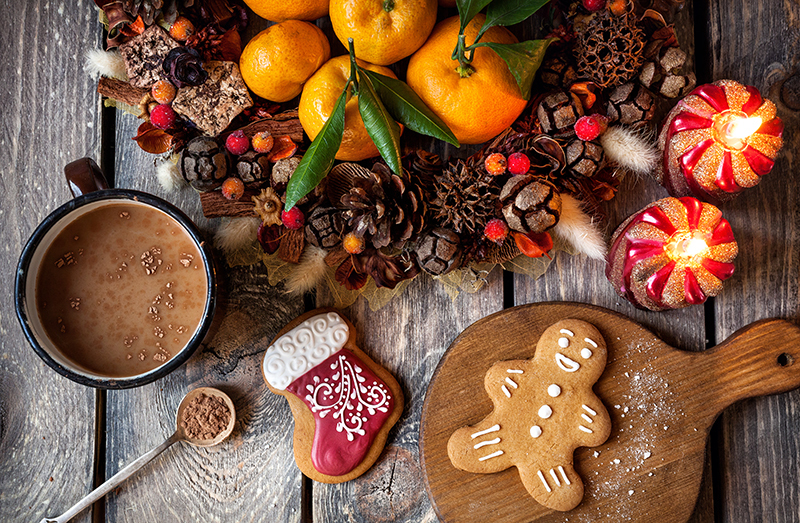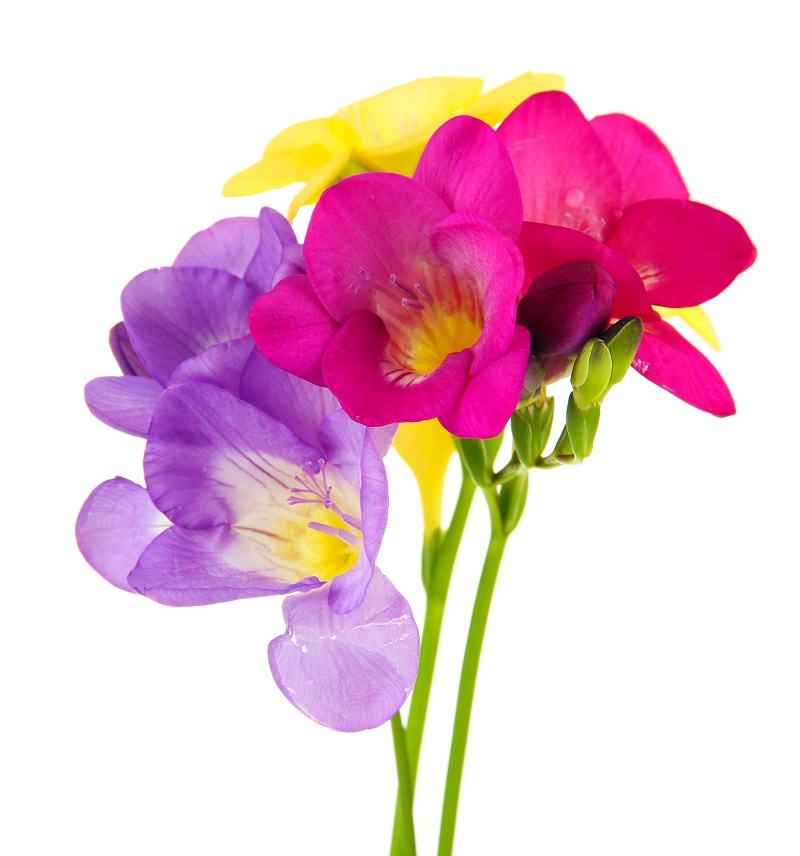Discover How to Sustain Vibrant Poinsettias Indoors
Posted on 30/08/2025
Discover How to Sustain Vibrant Poinsettias Indoors
Few plants embody the spirit of the holidays like the poinsettia. Their lush green leaves adorned with brilliant red, pink, or white bracts transform any indoor environment into a winter wonderland. But once the festivities fade, many plant lovers find themselves wondering, how can I sustain vibrant poinsettias indoors, year after year? In this comprehensive guide, we'll reveal proven techniques to keep your poinsettia healthy, glowing, and thriving long after the decorations are put away.
Understanding the Poinsettia: A Brief Overview
Before diving into indoor poinsettia care, it helps to understand a bit about what makes these plants so unique.Originating from Mexico, the poinsettia's botanical name is Euphorbia pulcherrima. What we often refer to as "flowers" are actually colored bracts--the plant's top leaves--that surround its small, true flowers. These bracts require specific conditions to maintain their vibrant color and health indoors.
Why Poinsettias Fade Indoors
- Inconsistent watering
- Poor lighting conditions
- Temperature fluctuations
- Low humidity
- Improper fertilization
Understanding these challenges is the foundation for keeping your poinsettia vibrant indoors.

How to Choose a Healthy Poinsettia for Indoors
The secret to long-lasting poinsettias starts before you even bring one home. When selecting a poinsettia:
- Look for deep, bright bracts that aren't wilted or curled.
- Check the soil--it should be moist but not soggy.
- Inspect leaves for signs of pests or yellowing.
- Select plants with unopened yellow flowers (cyathia) for longer bloom.
A strong start maximizes your success in growing vibrant poinsettias indoors.
The Best Indoor Environment for Poinsettias
Proper Lighting
Poinsettias thrive with abundant, indirect sunlight. Aim for at least 6 hours daily. An east or west-facing window is ideal. If too little light is provided, the plant may become leggy and the bracts may lose vibrancy. Avoid placing them in direct sunlight, as this can scorch leaves.
Temperature Control
Optimal temperature for poinsettias is 65-70?F (18-21?C) during the day, and no lower than 60?F (15?C) at night. Keep them away from cold windows, drafts, and heat sources like radiators. Rapid temperature changes can cause the plant to drop leaves.
Maintaining Humidity
Poinsettias prefer humid environments. Dry indoor air, especially in winter, can stress the plant. Try these tips to keep poinsettias healthy indoors:
- Set the pot on a tray filled with pebbles and water, ensuring the roots stay above the waterline.
- Mist leaves gently (but never the bracts).
- Use a room humidifier nearby.
Watering Poinsettias Indoors
Consistent, careful watering preserves the vivid bracts and lush foliage of indoor poinsettia plants. Overwatering and underwatering are the most common causes of drooping, yellowed, or dropped leaves.
- Water only when the top inch of soil feels dry to the touch.
- Remove any decorative foil before watering or poke holes in it to allow for drainage.
- Water thoroughly, letting excess drain out. Discard any standing water to prevent root rot.
- Do not let the plant sit in soggy soil!
During blooming, you might water every 5-7 days depending on your indoor climate.
Fertilizing for Vivid Indoor Poinsettias
To truly maintain vibrant poinsettias indoors, feeding is essential--just not immediately! Don't fertilize when the plant is in full color, as most holiday-purchased poinsettias have been pre-fertilized in the greenhouse.
When to fertilize: Begin feeding after the bracts fade, using a balanced, all-purpose houseplant fertilizer diluted to half strength. Apply every 3-4 weeks during spring and summer as new growth emerges. Over-fertilizing can harm rather than help, so less is more.
Extending the Brilliance: How to Keep Poinsettias Colorful Indoors
Key Tips for Prolonging Bract Color
- Place in bright, indirect light.
- Avoid exposure to cold drafts and heat sources.
- Water consistently without overwatering.
- Maintain stable, moderate humidity.
- Keep the plant undisturbed--avoid moving it frequently.
Did you know? The colored bracts may remain vibrant for several months with correct care!
Poinsettia Care Through the Seasons Indoors
Post-Holiday Care
When the holidays end, and the bracts eventually fade, your plant enters a new phase. Don't discard it! Here's how to keep poinsettias healthy inside through the seasons:
- Early Spring: When leaves yellow and drop, reduce watering. Cut the stems back to 4-6 inches tall.
- Late Spring: Repot into a slightly larger container with fresh, well-drained soil. Resume regular watering and place outdoors when night temps consistently exceed 60?F (15?C).
- Summer: Fertilize monthly. Pinch back stems to encourage bushiness.
- Early Fall: Bring indoors before night temps fall below 60?F (15?C). Reduce fertilizing.
- October-November: For reblooming, simulate "short days" (see below).
How to Rebloom a Poinsettia Indoors
Making a poinsettia rebloom is a rewarding indoor gardening challenge! Here's how to recolor a poinsettia indoors:
- Starting in late September or early October, give the plant 14-16 hours of complete darkness nightly for at least 8 weeks. Cover with a box or move to a dark closet from early evening to morning.
- During the day, place in a bright area for 8-10 hours, keeping up with gentle watering and occasional feeding.
- The colored bracts should develop by late November to recreate that holiday magic indoors!
Solving Common Indoor Poinsettia Problems
Poinsettia Dropping Leaves Indoors
- Overwatering or underwatering are the usual culprits--check the soil moisture.
- Temperature stress from drafts or heaters may shock the plant; keep it in a stable spot.
Poinsettia Pests and Diseases
Poinsettias indoors are generally pest-resistant but can sometimes exhibit:
- Whiteflies--tiny, white, flying insects. Rinse leaves and use insecticidal soap if needed.
- Aphids or spider mites--wipe leaves gently or treat with neem oil.
- Fungal issues--caused by poor air circulation or soggy soil. Avoid overwatering and crowding.
Inspect plants regularly to nip problems in the bud.
Repotting and Pruning Indoor Poinsettias
Repotting is essential to sustaining vibrant poinsettias indoors throughout many seasons. Choose springtime, right after pruning, and use a fresh, slightly larger pot with well-draining mix. Pruning fosters bushy growth and better bract display.
To prune: Cut back stems to 4-6 inches from the soil, above a leaf node. Pinch back new growth periodically in summer for bushier plants.
Decorating Your Home with Indoor Poinsettias
Beyond being just a holiday accent, indoor poinsettias can elevate your home's decor throughout the year. Try clustering different colored varieties together for a lush winter display, or pair with evergreens and white pots for modern flair.
- Create centerpieces by arranging poinsettias with candles or pinecones.
- Flank entryways or mantles with tall poinsettias for dramatic effect.
- Gift mini poinsettias in festive wrappings for a living, memorable present.

Frequently Asked Questions About Indoor Poinsettia Care
- Are indoor poinsettias toxic to pets? Poinsettias are mildly toxic if ingested, causing mild stomach upset in pets. Place them out of reach, and call your vet if you suspect ingestion.
- How long do poinsettias last indoors? With proper care, poinsettias can last months indoors, and even years as a recurring houseplant.
- Can I keep poinsettias indoors all year? Absolutely! Follow the tips above for year-round indoor growth.
Conclusion: Enjoying Indoor Poinsettia Brilliance All Year
Sustaining vibrant poinsettias indoors isn't just for the holiday season--it's a year-round horticultural adventure! By mastering the essentials of light, water, temperature, humidity, fertilization, and seasonal care, you can keep your poinsettias blooming with health and color month after month.
With a little attention and the right techniques, your vibrant indoor poinsettias can become perennial fixtures of beauty, delighting family and guests not just in December, but every day. Give these classic plants the right conditions and care, and watch how they reward you with their signature show-stopping color, indoors and out.
Looking to keep your home bright and festive year-round? Discover more tips on sustaining vibrant indoor plants and transforming your living space with nature's top performers--your poinsettia will thank you!
```Latest Posts
The romantic evolution of red roses on Valentine's Day
Discover How to Sustain Vibrant Poinsettias Indoors
Rediscover Sunflowers with These 8 Eye-Opening Facts
Practical Advice for Looking After Cut Flowers
Unveil the Secrets to Flower Preservation with 3 Easy Methods







